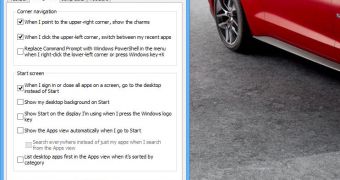The boot-to-desktop option has been officially implemented in Windows 8.1 in order to provide adopters of Microsoft’s modern operating system with a quick way to start their computers and skip the Metro UI completely, especially when working on a desktop computer.
Time passed and Microsoft acknowledged that it needed to make a better difference between the OS versions supposed to be installed on touch and non-touch devices, so the company decided to bring some new improvements to the boot-to-desktop behavior in the upcoming Windows 8.1 Update 1.
And still, with Redmond remaining completely tight-lipped on the subject but with so many rumors flying around, nobody knows for sure whether this option could be indeed turned on by default in Windows 8.1 Update 1 or not.
But, based on the existing rumors, here’s what we can tell right now:
First of all, the boot to desktop option will still be there in Windows 8.1 Update 1, so users can easily reach it by simply right-clicking the taskbar and hitting the properties link.
Then, it appears that Microsoft is working to make boot-to-desktop useful only for those who are still running Windows on a desktop computer and thus better differentiate it from the touch-based version of the operating system.
Leaked builds of Windows 8.1 Update 1 were booting directly to desktop and skipped the Start screen, which could be an indication that the option might be turned on by default only on PCs. It’s being rumored that touch-capable devices, such as tablets, could still see the Start screen at boot.
At this point, it’s not very clear whether Microsoft is willing to allow users to decide whether they want to see the Start screen at boot or not, but more details are likely to emerge in the coming weeks.
At the same time, people familiar with the matter pointed out that the software giant was also planning to allow PC makers to decide whether boot-to-desktop should be enabled or not on their devices, so in the end, it could all be just a matter of choice.

 14 DAY TRIAL //
14 DAY TRIAL //